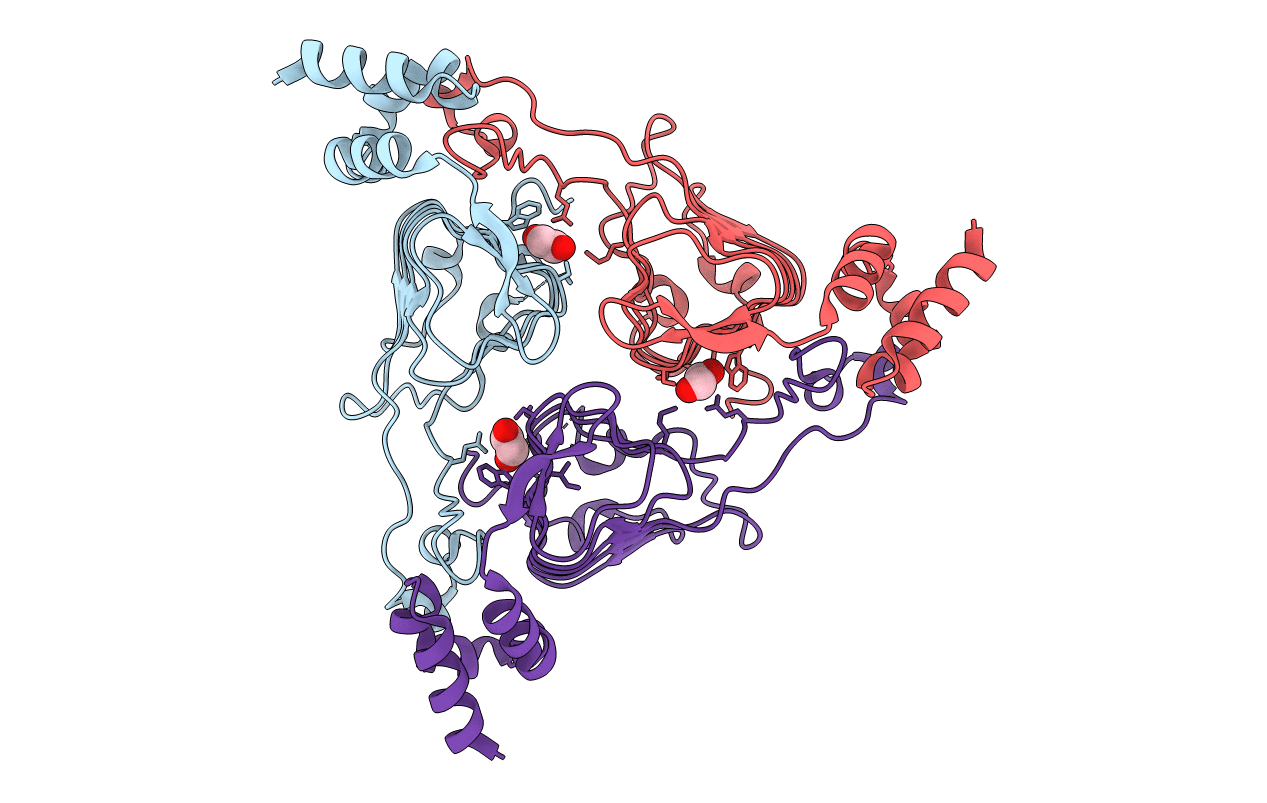
Deposition Date
2019-07-17
Release Date
2019-08-14
Last Version Date
2023-10-11
Entry Detail
PDB ID:
6PU9
Keywords:
Title:
Crystal Structure of the Type B Chloramphenicol O-Acetyltransferase from Vibrio vulnificus
Biological Source:
Source Organism:
Vibrio vulnificus (strain CMCP6) (Taxon ID: 216895)
Host Organism:
Method Details:
Experimental Method:
Resolution:
1.70 Å
R-Value Free:
0.24
R-Value Work:
0.19
R-Value Observed:
0.19
Space Group:
P 31


